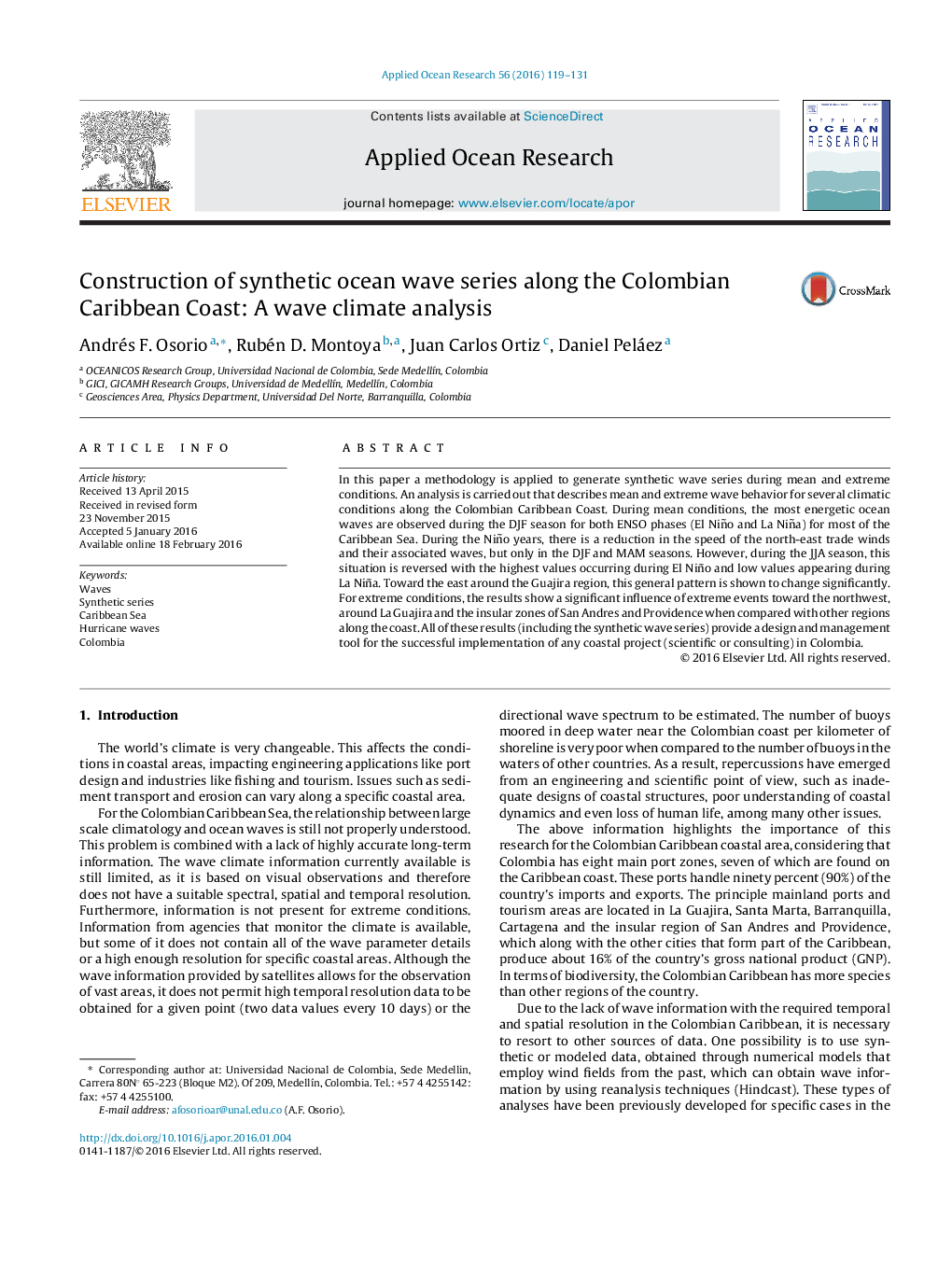| Article ID | Journal | Published Year | Pages | File Type |
|---|---|---|---|---|
| 1719818 | Applied Ocean Research | 2016 | 13 Pages |
•A methodology was applied to generate synthetic waves series (mean and extreme).•Seasonal variability is generally controlled by trade winds and the hurricane events.•A dipole between the north-east (hurricanes) and the south-west (cold fronts) is found.•During DJF and MAM seasons, in El Niño years low values of wave height occur.•During the JJA season, the highest values occurring during El Niño.
In this paper a methodology is applied to generate synthetic wave series during mean and extreme conditions. An analysis is carried out that describes mean and extreme wave behavior for several climatic conditions along the Colombian Caribbean Coast. During mean conditions, the most energetic ocean waves are observed during the DJF season for both ENSO phases (El Niño and La Niña) for most of the Caribbean Sea. During the Niño years, there is a reduction in the speed of the north-east trade winds and their associated waves, but only in the DJF and MAM seasons. However, during the JJA season, this situation is reversed with the highest values occurring during El Niño and low values appearing during La Niña. Toward the east around the Guajira region, this general pattern is shown to change significantly. For extreme conditions, the results show a significant influence of extreme events toward the northwest, around La Guajira and the insular zones of San Andres and Providence when compared with other regions along the coast. All of these results (including the synthetic wave series) provide a design and management tool for the successful implementation of any coastal project (scientific or consulting) in Colombia.
